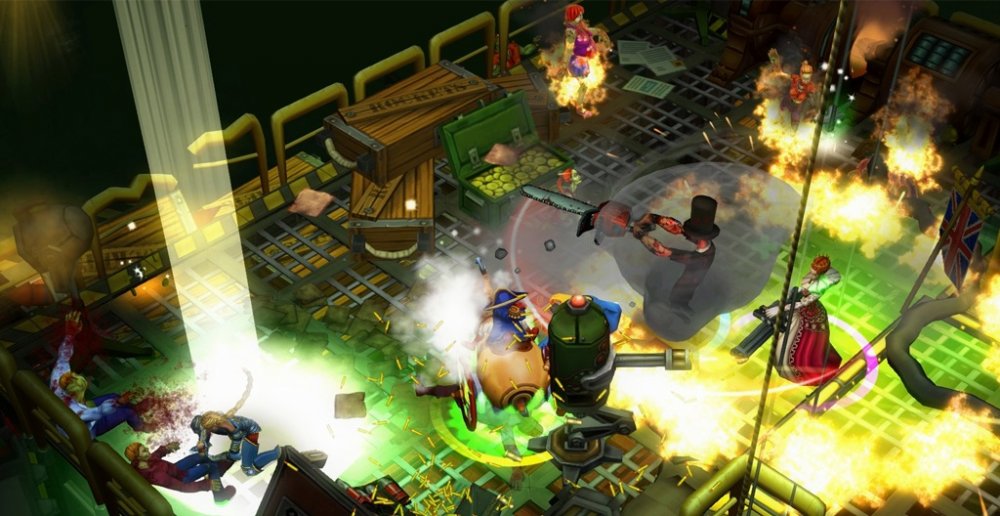Last week, we shared some hands-on impressions of Rocket City Studios' first title, Second Chance Heroes. This cooperative action/arcade game places you in the shoes of historical figures to bring down the evils of a modern world. We wanted to learn more how this whole thing came about and went straight to the source. Dana Massey, Lead Game Designer at Rocket City Studios, was kind enough to humor our barrage of questions.
Co-Optimus: Tell us about Rocket City Studios and how you got started in games development. You’re based in the U.S. and Canada?
Dana Massey: Years before, the core of the team had worked together at another company called Mutable Realms on an MMORPG called Wish. Unfortunately, we never released that game – it was an MMORPG set to launch alongside a glut of MMOs including World of Warcraft – but the passion remained. So, in late 2009 we came back together with the goal of doing something more focused: a funny, cooperative game. From that, Second Chance Heroes was born.
The majority of development takes place in Canada, with some key contributors working from the US.
Co-Optimus: Tell us about your first title, Second Chance Heroes.
Dana: [It's] a cooperative arcade action adventure where four players work together through a world of strange monsters. As you move through that world you collect new historical characters to play and long lost relics that provide new abilities when used; like Oppenheimer’s Vile, which sets off a mini nuke and sends people flying.
But the bottom line is that we’re a game that just doesn’t take itself too seriously.
Too many games in this genre are somber marches through the underworld to save the world from an apocalypse. We’re also saving the world from an apocalypse, of course, but in the most preposterous way possible: clones of historical figures fighting sentient cheeseburgers in an ancient underground hobo colony (among other places).
Second Chance Heroes is meant to be a fun escape not only from everyday life, but also from a genre of games that always has you considering epic and weighty matters. Our primary concern? Do you want to shoot people with Napoleon’s ride-on-cannon or mow them down with Queen Elizabeth I’s mini-gun as she chomps down on her cigar.

Co-Optimus: What was the inspiration for this game? There is definitely an arcade feel/vibe to it, coming just short of a “Insert Coin” graphic. Any particular games from that venue that influenced its development?
Dana: I think it was more the general sensibility of that era that really touched home for us. Mario, for example, really makes no sense whatsoever. You’re a plumber jumping on turtle shells to save a princess. Why can you turn into a raccoon and fly? Because it adds something really fun to the game.
We’re much the same way. Of course, it makes no sense when you walk over a power up and suddenly you can make a disco ball come from the sky, float over your head and distract all of the enemies as they stop fighting and start dancing. It’s still just an amazing moment when you first discover it. So clearly, we had to include it.
We wanted to make everything do something. Power Ups are used in lots of games, and we chose them over traditional level loot because they can have an instant effect on the level.
Swapping is another thing that really gives us that arcade feel. To be honest, the idea came from pro wrestling tag teams. We let you swap back and forth (TAB key) between two characters on the fly and it’s not something I really have not seen in quite some time.
